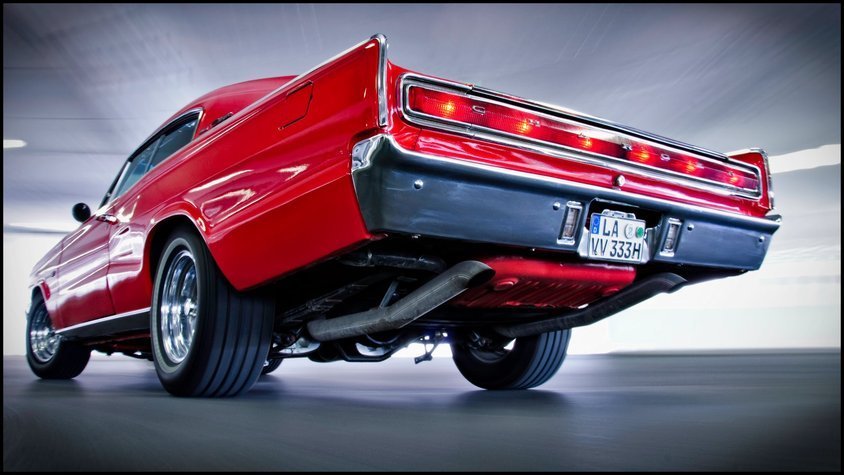Unveiled at the 1965 Auto Show circuit, the Charger II gave the public a close look of what Dodge would be releasing in January of 1966. The Charger II show car demonstrated the new styling ideas at Chrysler Corporation. Clean, simple, and sweeping lines define the new Charger’s shape. The long smooth hood is capped with a delta hood ornament, while the fastback roofline joins to the short rear deck lid. In order to maintain a smooth clean appearance door handles were replaced with a concealed latch. The vent frames were removed to create an open and clean expanse of side glass. The Charger’s cowl houses three larger air ducts that circulate fresh air throughout the interior and exhaust the stale air through vents atop each rear fender.
The front grill assembly is stylish but functional. A full steel grill wraps around the front of the Charger, with four smaller divider bars connecting the headlights. The massive grill assembly provides true bumper-like protection. The twin rectangular headlights further enhance Charger’s simple clean appearance. The Charger was designed to accept any one of Dodge’s high performance engines.
The Charger’s interior includes such amenities as power windows and ventilated seatbacks. The Charger features fully padded four bucket seats with body molded contours. The door panels on the Charger are smooth and cleanly styled, and are combined with an integrated armrest and door latch. A full length console houses the power window controls, shift selector, and armrests.
The dash cluster has four large pods for easy viewing. The two center pods house the speedometer and tachometer. The rear bucket seats and armrests in the Charger fold down to provide a flat and large cargo area. The rear truck dividing panel also folds flat allowing an addition increase in Charger’s cargo area.
Dodge Charger II Concept Car: After its debut at the Chicago Auto Show from February 20 until 28, 1965, the design study toured several US auto shows and scored great success. The production version built from model year 1966 featured pop-up headlights which were hidden behind a full-width radiator grill when not in use. Otherwise only minor modifications had been made as compared to the show car.















